Discussing the route home with Bernie.
The previous week had brought a rather hefty rain storm, so we were a bit worried that the event might be canceled or that the town green would be a mud pit. But Saturday brought sunny weather with a hint of autumn in the breeze. Upon arrival, we drove around the green once and attempted to find a parking space. After almost getting my car stuck in a grassy area, we found a safe parking space behind the First Congregational Church at the end of the green. We changed shoes, put on our hats, and filled our 18th century pockets with 21st century necessities before heading over to the camps. The Lebanon Towne Militia had their sign up at the first tent for regiment registrations and visitor information.
Next to this tent was a line of continental tents and on the opposite side of the green were the tents of the British regiments, with a few rows of sutlers in between.
A weaver in the Continental camp.
Dr. Jackson in the Continental camp.
On the British side: the 54th Regiment of Foot.
As we began taking a peek at what people were cooking and what crafts they were working on, we heard an amplified voice coming from farther down the green. We followed the crowd to where a small number of militia men were gathered on opposing sides. As they were setting up to fire, the man with the microphone explained the typical rules of battle, which we unfortunately could no longer hear once the action began. The little skirmish didn’t last very long, but provided a good example of what a larger battle might entail. Below are a few pictures of the battle:
The Jonathan Trumbull Jr. House Museum
After the reenactment, we took a stroll through the sutler area and then walked down the street to the Jonathan Trumbull Jr. House Museum for a tour. Let me pause here for a brief overview of the Trumbulls of CT:
While giving tours at the Noah Webster House, I am often asked if he is related to Daniel Webster, or some other Webster. What I realized in Lebanon is that there is often similar confusion with the Trumbull family as well - but not a “how are they related?” type of confusion; it’s a “they have the SAME name!” confusion. So here’s a quick rundown of the Jonathan Trumbulls of Connecticut:
Governor Jonathan Trumbull
This is the Trumbull whose birthday was being celebrated. His father was a merchant who had moved to Lebanon a few years before Jonathan’s birth in 1710. After attending Harvard, Jonathan was needed back in CT to run the family business. He served in the CT House of Representatives and was elected as Deputy Governor in 1766 and as Governor in 1769. He retired in 1784 and died the next year. He had six children, including Joseph, Jonathan, and John. (I guess he was partial to “J” names, which I am as well!) His house still stands in Lebanon and is owned and operated by the Connecticut Daughters of the American Revolution. Unfortunately, we didn’t have time to see his house on this trip, but hope to visit again soon.
Jonathan Trumbull Jr.
This Jonathan is the second son of the above mentioned Governor Trumbull. Jonathan Jr. was born in 1740 and, just as his father had done, attended Harvard before returning to assist with the family business. He served several posts during the Revolution, including that of military secretary to General George Washington, witnessing the surrender of Cornwallis at Yorktown. After serving as Speaker of the House of Representatives and as a U.S. Senator, Jonathan Jr. was elected as Governor of CT, a position he held until his death.
John Trumbull
He is the youngest child of the first Governor Trumbull and younger brother to Jonathan Jr. We know John Trumbull today as the “painter of the Revolution.” He attended Harvard as well, and then served in the Continental Army. Before resigning from the military, he served as the second personal aide to General Washington. In the following years, he traveled to London and Paris to study painting and began work on his many portraits and works depicting the fight for American independence that are so familiar to us today.
Back to our visit to Lebanon: Again, we were visiting the home of Jonathan Jr. We had a very lovely and informative tour of the home with only one other guest. Our guide was obviously well versed in the history of the family and the house and was enthusiastic in sharing her knowledge. The house was built in the 1760s and was remodeled by master joiner Isaac Fitch (another well-known Lebanon resident) soon after Jonathan’s marriage to Eunice Backus in 1777. Much of the detailed woodwork still remains intact in the house today.
The wood paneling in one of the front rooms showcases the surviving carvings of Isaac Fitch.
A close-up of Fitch's wood work.
The second parlor downstairs.
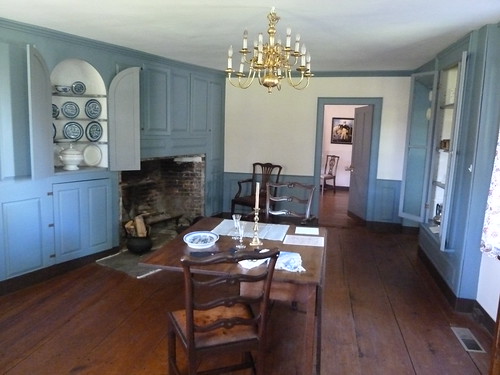
A view of the kitchen from a corner which used to be a closet. Also removed from this spot was a staircase, leading to the rooms above stairs.
Also, every room featured a poster board with pictures from the various restorations of each room. I found this to be extremely interesting and helpful in visualizing exactly how the house would have looked when the Trumbull family lived there. The house is beautifully furnished with antiques and reproductions and some portraits of the family as well.
Pictured from left to right are Jonathan Jr.'s wife, Eunice, and their daughters Faith, Harriet, and Maria.
This portrait hangs in an upstairs bedroom. Painted by John Trumbull, this portrait features Jonathan Jr., Eunice, and their daughter Faith.
One of the bedrooms.
Living in Connecticut, I’ve always been aware of the Trumbull family, but I never realized how many contributions they each made to the freedom and betterment of our country. There are several books about the family and the town (many by town historian Alicia Wayland) and I am looking forward to reading further. We are also hoping to visit Lebanon again soon (although I believe most of the houses close for the winter season) to visit the other historic sites in town.




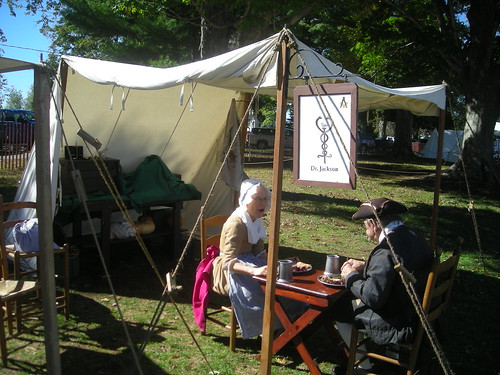
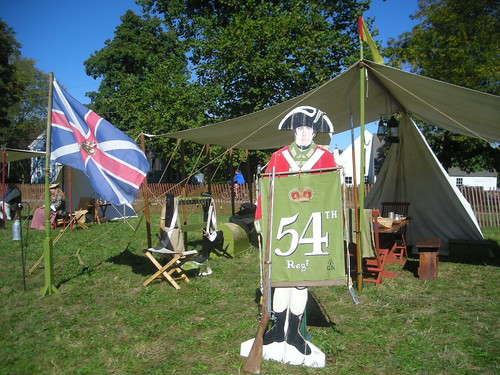

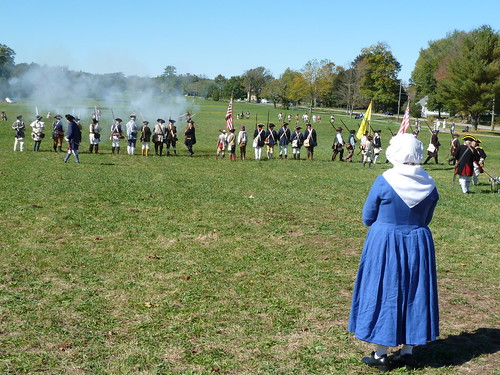



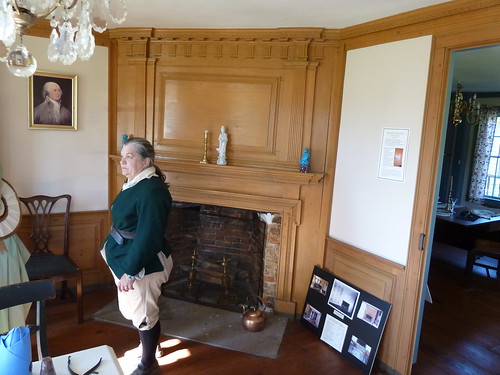




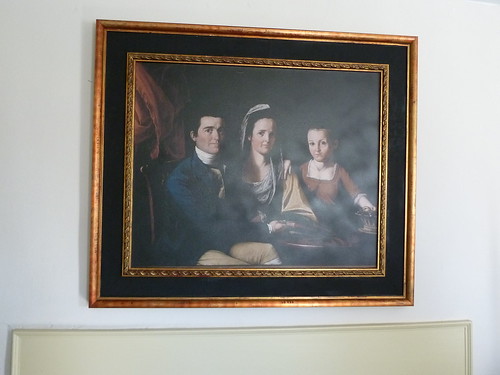
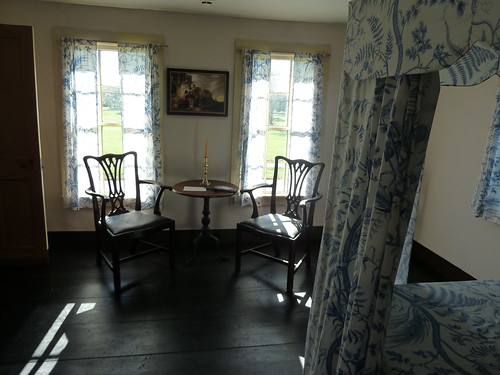
1 comment:
I love that first picture! All the families of each colony just seemed to know each other and intermarry!
Laurie
Post a Comment